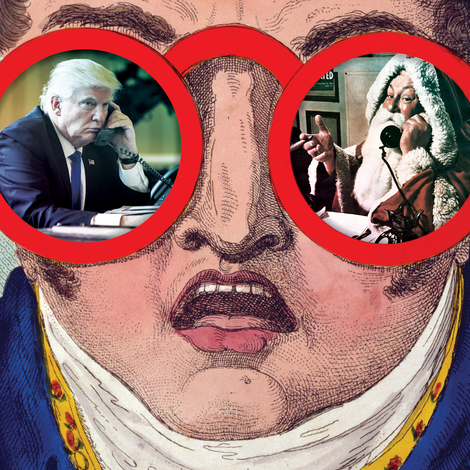Wes Hardin, the homicidal Texas gunslinger and Confederate crusader, was hardly a typical American hero. Yet Johnny Cash venerated him in two songs, most famously “Hardin Wouldn’t Run.” Bob Dylan named an entire album after Hardin (though, strangely, misspelled his name) and characterized him in song as a “friend of the poor.” Back in the 1950s, Rock Hudson played him sympathetically in the movie The Lawless Breed as a man who fell into a life of crime due to hard luck and the death of the girl he loved.
Now comes Bryan Burrough’s new book, The Gunfighters: How Texas Made the West Wild, to end the scrubbing of Hardin’s life of crime, along with those of many other murdering cattle rustlers, cheating saloon gamblers, and quick-draw vigilantes.
The Gunfighters is a history of the violent rogues of the Wild West, the origins of their turmoil, and how decades of culture have distorted their memory into something as American as apple pie.
As Burrough describes him, Hardin would shoot people for beating him at cards or accidentally bumping into him. Legend has it he once shot a man to silence his loud snoring.
Why the long American fascination with, and even veneration of, Wild West outlaws such as Hardin? Burrough explains that the gunfighter represents “the supreme individualist”—“a man alone with that great equalizer, a gun.” Brave, yes, violent and defiant, certainly, pure American, arguably, but virtuous? Hardly.
Burrough is the talented author of Barbarians at the Gate, a business classic, and debunker of Texas mythology as co-author of Forget the Alamo, who knows how to write colorfully about colorful personalities.
A resident of Austin, Burrough puts a bull’s-eye on his home state. Having once won its independence from Mexico, the rebel state was never completely conquered by the North. Thousands of Confederate veterans, many of whom had suffered severe trauma during the Civil War, kept their weapons and were quick to use them to resist Reconstruction, the hated lawman, and the Comanches. “What emerged was a highly martial culture, its people deeply attuned to violence and expert at it,” Burrough writes.
From the cattle wars of Wyoming to the wild shoot-outs in Billy the Kid’s New Mexico, Texas cowboys, cattlemen, and outlaws were prime instigators.

As transient drifters, the gunfighters make for interesting characters, of course, but their brazen toughness and rugged individualism also make them attractive to American tastes. They are also gruff, authentic, and cruel—qualities that seem to resonate enduringly in American culture.
Jim Bowie, long a hero in American folklore, is described as “an obscure slave trader deeply engaged in land frauds” before his martyrdom at the Alamo. Jesse James was “the embodiment of the Reconstruction outlaw, the die-hard rebel who refused to stop fighting the war.” Doc Holliday of O.K. Corral fame was a “great oddball, a boozy, cantankerous Georgia consumptive” whose orneriness “morphed into a taste for violent confrontation.”
Burrough notes that while the gunfighters left no political or socio-economic legacy, “their impact is instead cultural.” Culture entertains, but also influences how we view the present, the past, and even the future.
In the case of Bonnie and Clyde, featured in one of the most popular movies of the 1960s, the marauders were viewed as free spirits at a time of youthful revolt against the Establishment. Robert Redford and Paul Newman made Butch Cassidy and the Sundance Kid the most affable thieves to ever rob a bank. “Butch’s legend rests on a shaky pedestal” is Burrough’s wry put-down.
Billy the Kid, the gunfighting livestock thief who stole his way across New Mexico, has been portrayed as a violent man, but one who rebelled against injustice. He was featured in nearly 50 films in the 1940s alone, by Burrough’s count, as if World War II wasn’t violent enough. Tom Petty, Billy Joel, and Bob Dylan (again) sang songs about him. Aaron Copland even composed a ballet—a ballet!—about the desperado, titled Billy the Kid, of course.
The days when Westerns like Gunsmoke and Cheyenne dominated television have faded, replaced by a plethora of police dramas. If there is a tie between the gunfighters and their past glorification in pop culture to recent crime waves or modern tragedies like Columbine, Parkland, and Uvalde, Burrough openly acknowledges his book does not connect those dots.
But Burrough’s survey of miscreants neatly sizes up the Wild West myths and archetypes as products of a bellicose culture born in the American South before the Civil War. The Western gunfighter was the descendant of the Southern duelist, who lived and died by codes of honor, violence, clannishness, and white supremacy.
From the Wild West cauldron of lawlessness emerged a hyper-masculine, tribal, and hyper-violent culture. A century and a half later, The Gunfighters is an attempt to move us in a more peaceful direction.
“The surest way to address history, especially its ‘unpleasant’ aspects,” Burrough concludes on his final page, “is to engage with it, to learn.”
Clifford Krauss is a former New York Times and Wall Street Journal correspondent who lives in Texas

